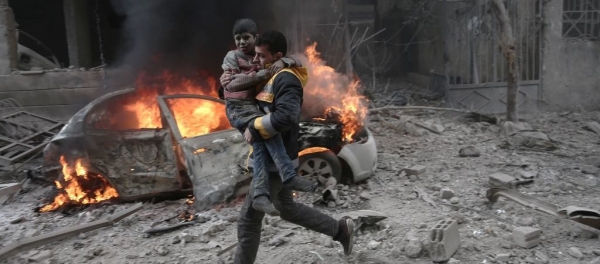According to the AOAV ("Action on Armed Violence") one of the greatest problems in documenting the effects of armed conflicts, and in particular the effects of episodes of explosive violence, is that very often the figures reported do not really give an idea of the damage inflicted to civilians and fighters. Oftentimes, in fact, there is a tendency to give prominence only to the number of deaths, neglecting the wounded, who in fact represent in most cases the majority of the victims.
It is estimated that in 2017, of all the explosive incidents worldwide, 54% of civilian injuries went unrecorded. Although the figure was lower in 2018 (46%), the numbers are still much larger than, for example, 2011 (18%).
Therefore, a sad trend emerges: in recent years, injured from explosive violence are not making the news.
By analysing the numbers of the Syrian conflict one can well understand the extent of the situation: since 2011, at least 5,134 incidents, leading to the death of 33,135 civilians and the injury of 34,128, have been reported in English language media.
While there may be doubts as to the almost equal ratio between fatalities and injuries considering the type of incidents, it is indeed quite difficult to believe that in the majority of episodes with at least one death (e.g. 77% in 2012, 81% in 2018) not a single person was reported as injured.
Likewise, 141 accidents reportedly occurred in May 2019 alone, with no injured civilians despite 276 deaths.
The increasing lethality of weapons, or the lack of access to adequate healthcare, may be the cause of the growing number of deaths, unmatched by a corresponding growth in the number of injuries. However, it is much more likely that accessing the data and reporting them correctly is becoming increasingly difficult for journalists as the conflict becomes bloodier and extends to more remote areas.
At a global level, this assumption is supported by the fact that civilian injuries are more likely to be recorded when the perpetrator is a non-state actor and when the weapon was an improvised explosive device (IED). In fact, these instruments are often used in cities (where the concentration of journalists is higher) by rebel forces, whose activity generates more clamour compared to a State intervention which, on the contrary, could be covered up by the veil of censorship.
What has just been said about the clamor generated by the news itself is finally confirmed if one observes that the percentages of injuries reported are similarly low wherever there is an ongoing war (e.g. Yemen). On the contrary, where civilian deaths do not occur on a daily basis, the injuries are reported in greater numbers, showing a much more verisimilar deaths/injuries ratio.
Similarly, according to AOAV, the presence of wounded people tends to be obscured by the presence of children among the victims and neglected when attacks are directed against military targets.
In conclusion, in the light of what emerges from the collected data, we can deduce that the reporting of injuries depends on many different factors, in some cases even on the newsworthiness of the fact itself. What is clear, however, is that the repercussions of explosive violence extend far beyond those who are killed, and that fully reporting the figures of such violence, without neglecting the wounded, must be considered a fundamental imperative, not only from a moral point of view, but also in order to monitor the phenomenon and address it in a more efficient way.
To know more, please read:
Author: Federico Rossi




